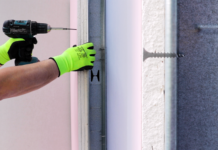It is common for professionals and beginners to have an issue producing high-quality welds. Their work ends up cracking and porous with many irreversible defects. Such problems affect the joint strength and the structural integrity. It can also go to your head, affecting your confidence in your skills. While various things result in defects, there are other ways you can improve your weld quality. Here are a few tips to help you.
Clean Your Material
In most cases, the reason for defects on your weld is the presence of contaminants on the material. Any dirt interferes with the welding process, resulting in undesirable results. So, it is vital to remove rust, grease, dust, and paint on the material before you begin the process. Cleaning the material is an initial step you should never skip. Eliminate contaminants to improve your weld quality.
Choose the Right Welder
Picking the right welder is also crucial for attaining high-quality welds and efficiency. With the different types of welders in the market, you need to know the elements to look for to choose a welder that meets your needs. The welder you choose for production welding can make a huge difference in your output. Therefore, consider the welding process, power source, portability, welding environment, and safety features when selecting a welder.
Find a Ground
For your welding arc to perform correctly, you must have a complete circuit. This allows the power to flow from the welder smoothly and without resistance. If the torch is sputtering, you need to fix it. Find a ground with the metal close to the arc to improve your welding results.
Utilize Both Hands
It is also advisable to use both hands, especially when using a MIG welder from Norsemen Safety. Micro Weld, Inc. professionals suggest that using both hands makes handling more stable and helps control the speed. Use one hand to hold the crook and the other on the trigger. Remember to wear heavy-duty gloves to prevent injuries.
Listen
Not many beginner welders understand the essence of listening when welding. Professionals use their ears to make satisfactory welds because listening ensures good quality. You need to hear a steady buzz during welding. If you hear a hissing sound, the voltage is too high. A loud and raspy sound could indicate low voltage.
Keep the Pace
Remember the speed you use in the welding process affects your output. You might be too eager and push the arc quickly along the joints. This can result in a tall and thin weld that has not penetrated deep enough. So, keep the pace and take things slow.
Choose the Right Gas
Your welding results will be satisfactory if you use a suitable gas. Therefore, consider the type of metal you use to know the kind of gas to choose. Evaluate the depth required and how important the appearance is. You can then select the gas to meet these needs. This protects the weld from exposure, makes the arc stable, and improves your output quality.
Conclusion
Regardless of how experienced you may be at production welding, there is always room for improvement and the possibility of making mistakes. Therefore, take note of these tips to improve your weld quality to change your work.
Read Also: Antiquità: Explore Past’s Timeless Treasures



































































